Alligators and crocodiles are some of the most aggressive creatures on the planet – they’ll take down a boat if you come up to their nest.—Jack Hanna
Of the twenty-one species of crocodilians distributed across the Tropics and Subtropics of the world, only three can be observed in the wild in the United States. The American Crocodile (Crocodylus acutus) and the Spectacled Caiman (Caiman crocodilus), the latter introduced via the pet trade, have very limited geographic ranges in tropical South Florida; American Alligators (Alligator mississippiensis) are widely distributed across the coastal South from the Carolinas to the Mexican border. American Alligators are the only crocodilians you’re likely to encounter in the U.S. without looking for them. I watch American Alligators regularly at Brazos Bend State Park and Anahuac National Wildlife Refuge and environs on the Texas Gulf Coast (aka the Texan Riviera!).
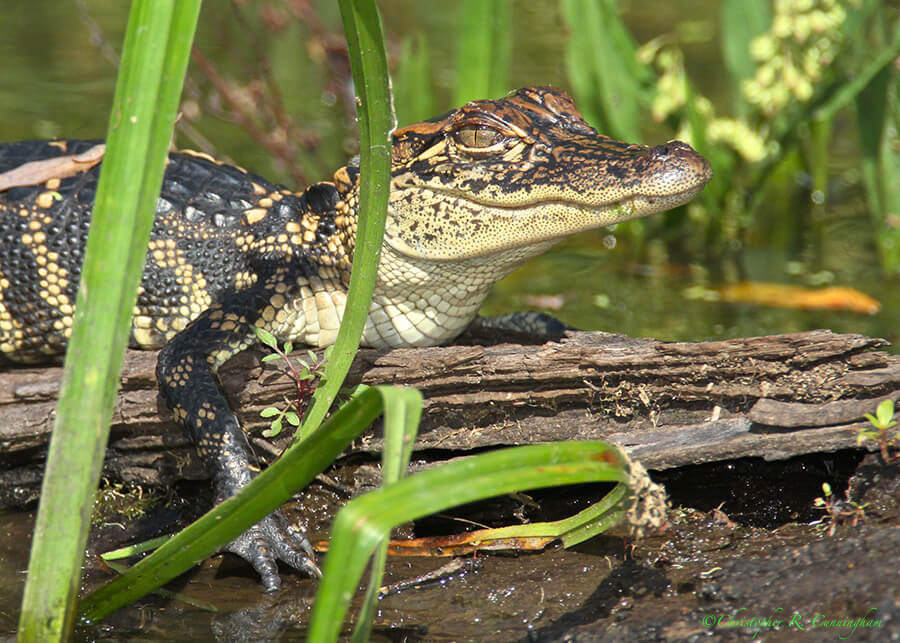
In all the time I’ve spent birding in swamps and marshes in the American South I’ve been unnerved by alligators only twice. Once was my own fault, and the second was just a big alligator doing what big alligators do.
In the first case, I was edging down into a patch of water hyacinth in an attempt to get closer to a bird that was perched on a log on the other side of a bayou. The legs of my tripod were in a few inches of water. This was just stupid for lots of reasons (can you spell water moccasin?). From out of the hyacinth a medium-sized alligator bolted toward me. The alligator must have immediately recognized that I was too big to eat (or the beast was simply engaged in some sort of threat display) and slumped back into the water and disappeared. (Sidebar: it’s actually very hard to tell how big alligators really are so I break them into small, medium, and large. Small are colorful and sort of cute. Medium can send you to the emergency room. Large, eight feet and above, are decidedly to be avoided.)
In the second case, I was standing well up on dry land when a big alligator (10-footer?) began steaming toward me across Elm Lake. This animal was moving fast and staring right at me. As I watched in horror I began asking: You are going to stop, right? How about now? You can stop, now! Finally, the alligator veered off, leaving me asking myself what it thought I was. I’d like to think that I don’t look too much like a nutria (river rat) or feral hog! If that one had come after me, there really wasn’t much I could do about it except maybe ram a very expensive Italian tripod down its throat.
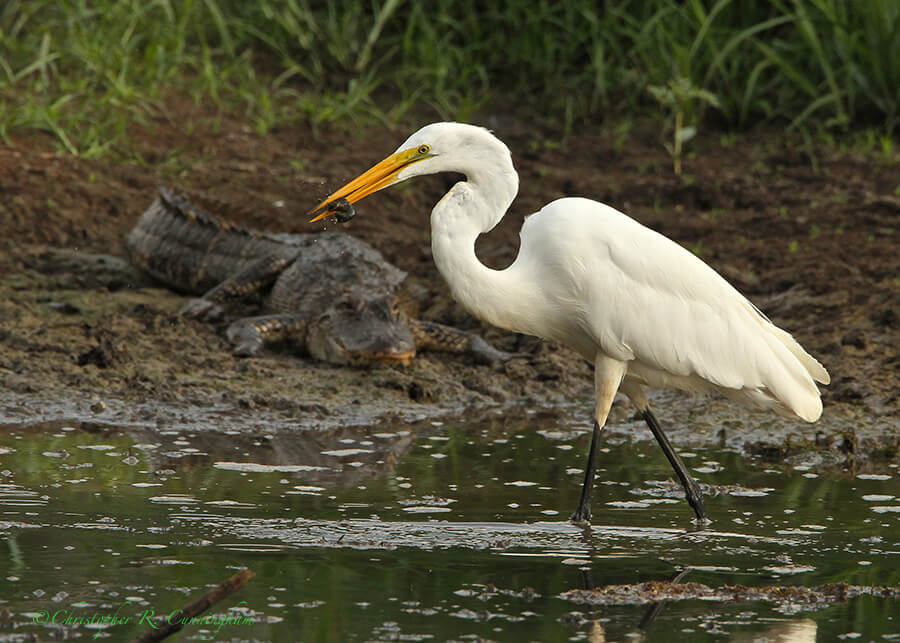
Much of the American Alligator’s diet consists of fish and frogs: I’ve seen them hanging around on shore with a big bowfin or gar hanging out of their mouths and snapping up frogs in the shallows. At Brazos Bend State Park, it is also not uncommon to come upon them with a nutria or feral pig clamped in their jaws—thus helping to control the populations of these destructive pests that are so hard on our aquatic habitats due to their relentless digging and rooting.
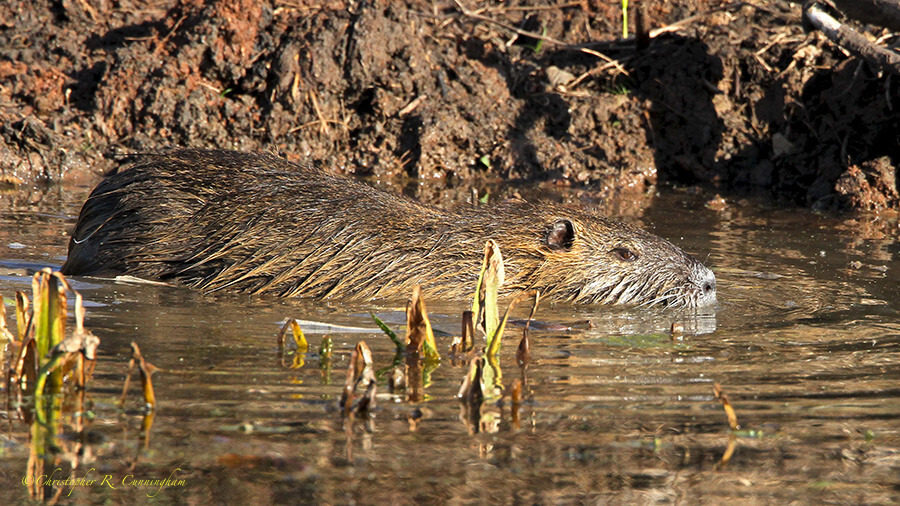
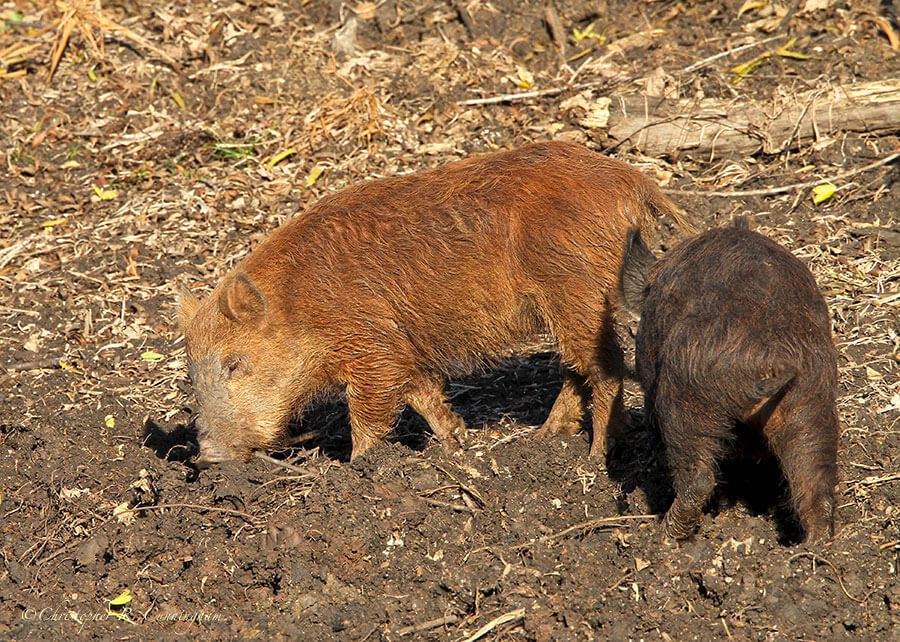
One of the real highlights of alligator watching comes in late summer when babies emerge from the nest. Alligator nests consist of large piles of decaying vegetation. The heat generated by the decomposition incubates the eggs. Most years at Brazos Bend State Park it is possible to observe groups of baby alligators being protected by their mother from the trails without having to venture down into dangerous marshes. Sometimes it is possible to photograph hatchlings riding around on mom’s back. Because baby alligators suffer such a high attrition rate due to wader (especially Great Blue Heron) predation, these mother alligators are on high alert and are in about their worst mood of the year. For the nature observer, it’s time to steer clear.
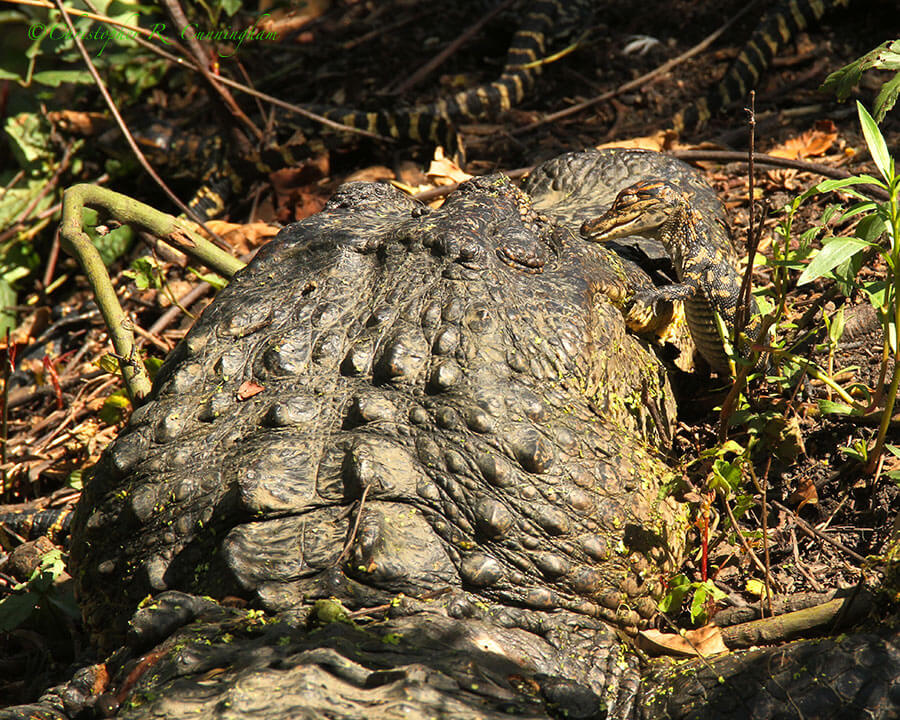
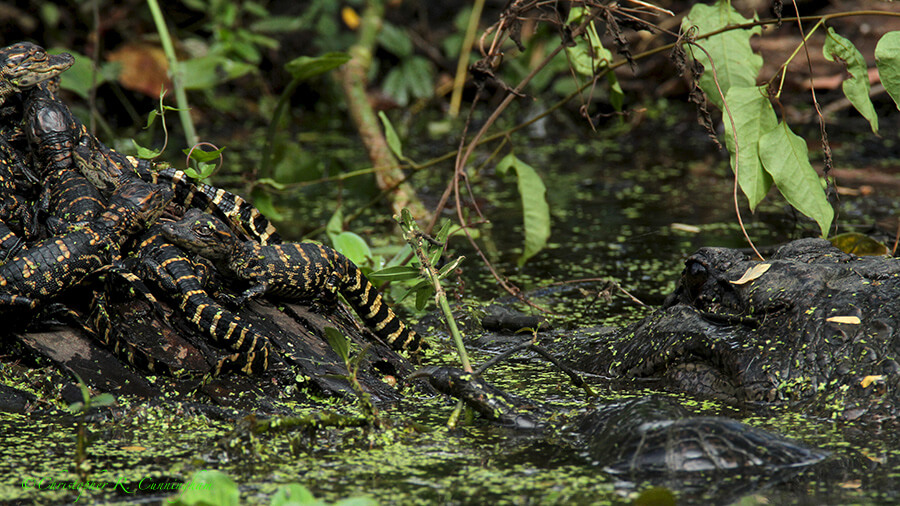
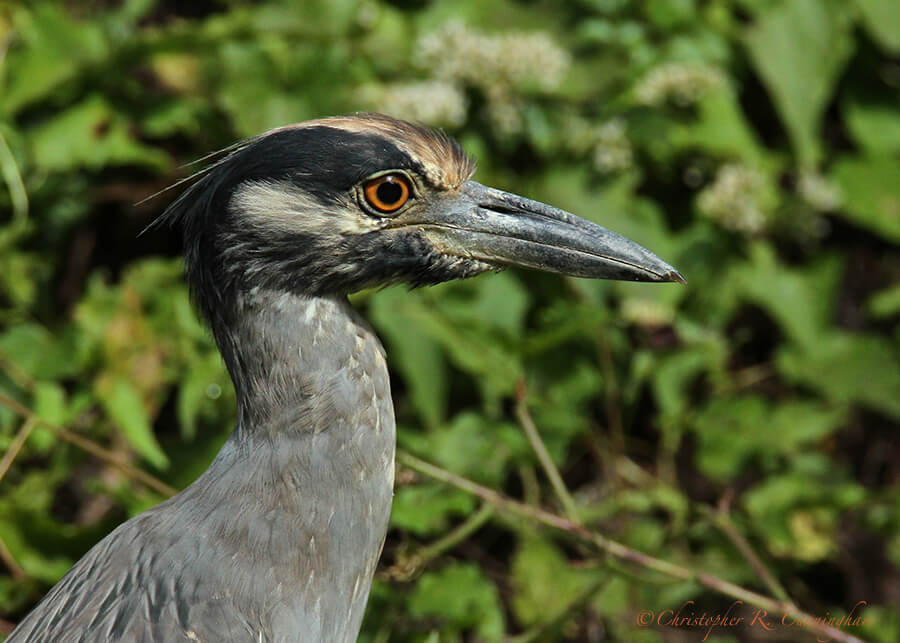
Clearly American Alligators are to be respected, and from time to time they do kill and maim people, but I don’t consider them to be truly dangerous like the more aggressive Nile, saltwater, or mugger crocodiles that kill uncounted humans each year in the Tropics. And they certainly don’t make my blood run cold like the thought of coming face-to-face with a mama Grizzly in the backcountry of Wyoming or Montana, or a jaguar in southeast Arizona (yes, they have been reported).
Some day I hope to bird by camera in some of the world’s exotic places. The Maasai Mara (Tanzania/Kenya), the Pantanal (Brazil), and Kakadu National Park (Australia) included. All of these places are home to dangerous crocodilians that can not be ignored. I read with interest the stories of giant man-eater crocodiles like Gustave (Ruzizi River, Burundi) and Lolong (Philipines), and note tales of tourists disappearing in Kakadu National Park (Australia), presumed eaten by salties. I’d like to think that my time among the alligators (and other deadly herps like rattlesnakes, copperheads, water moccasins, coral snakes, etc., that I encounter from time to time) will have prepared me for adventures in these dangerous places. Alligators are a constant reminder to be ever vigilant, to look and listen, to look before I step, and whenever possible to stay well away from the water’s edge in crocodilian-infested lands.
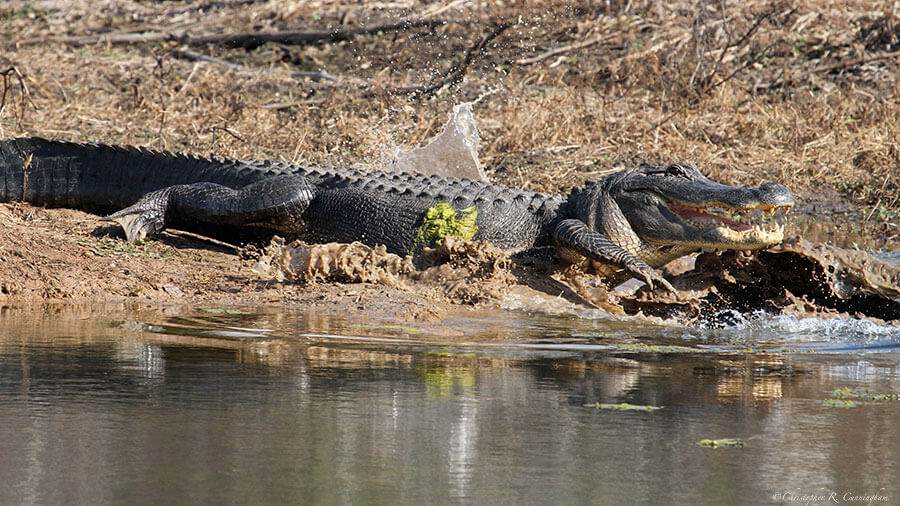
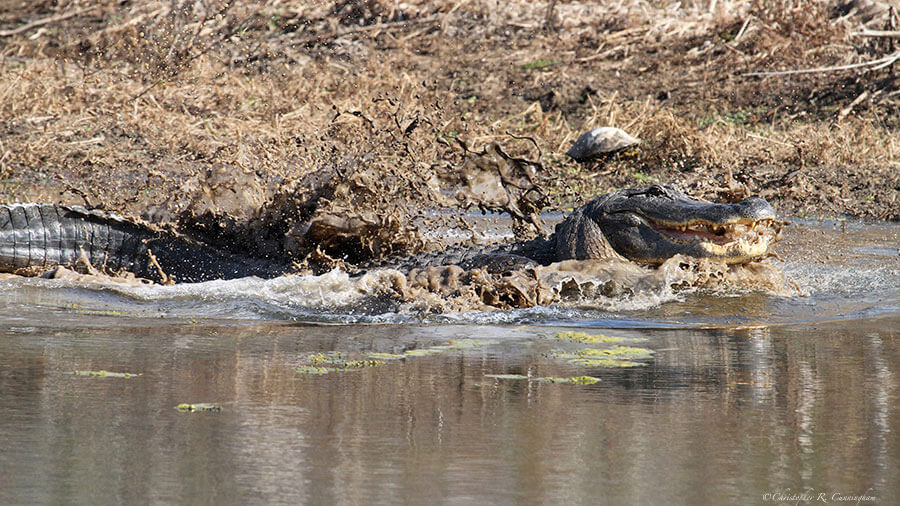
The crocodiles and alligators and their relatives, the order Crocodilia, have been among the least progressive of ruling reptiles but nevertheless are the only members of the archosaurian stock which survived beyond the Age of Reptiles.—Alfred Sherwood Romer, Vertebrate Paleontology
©2014 Christopher R. Cunningham. All rights reserved. No text or images may be duplicated or distributed without permission.